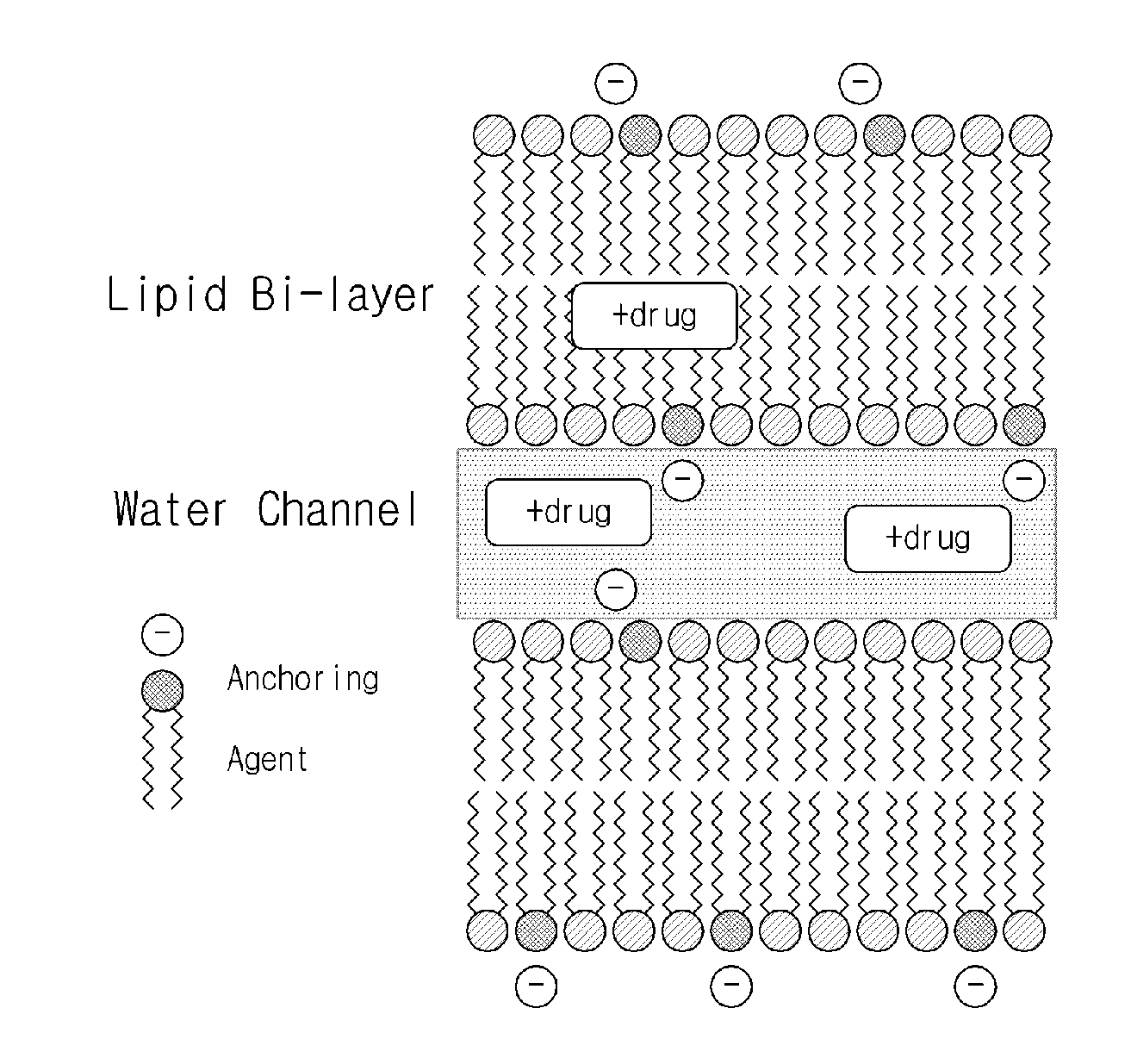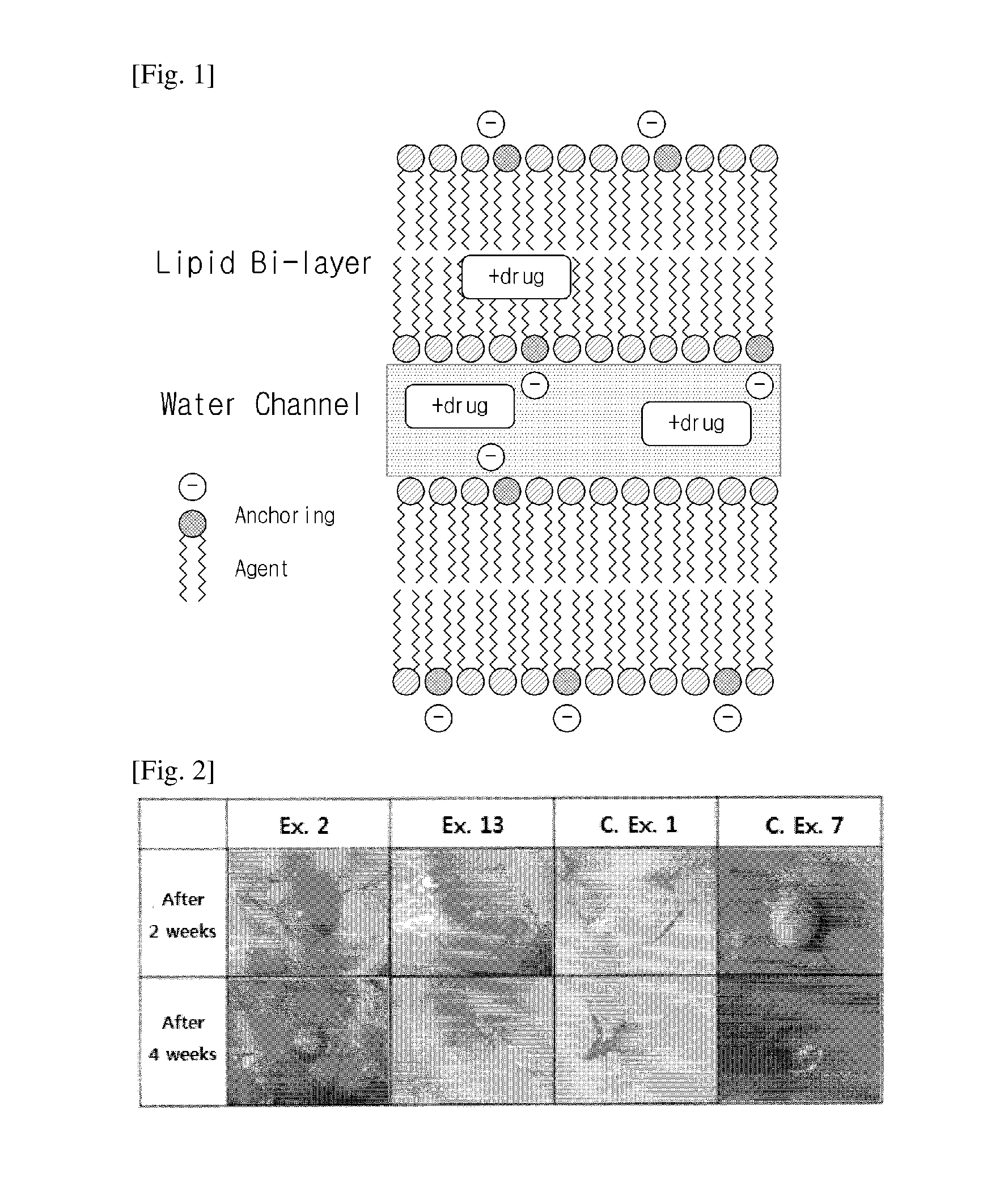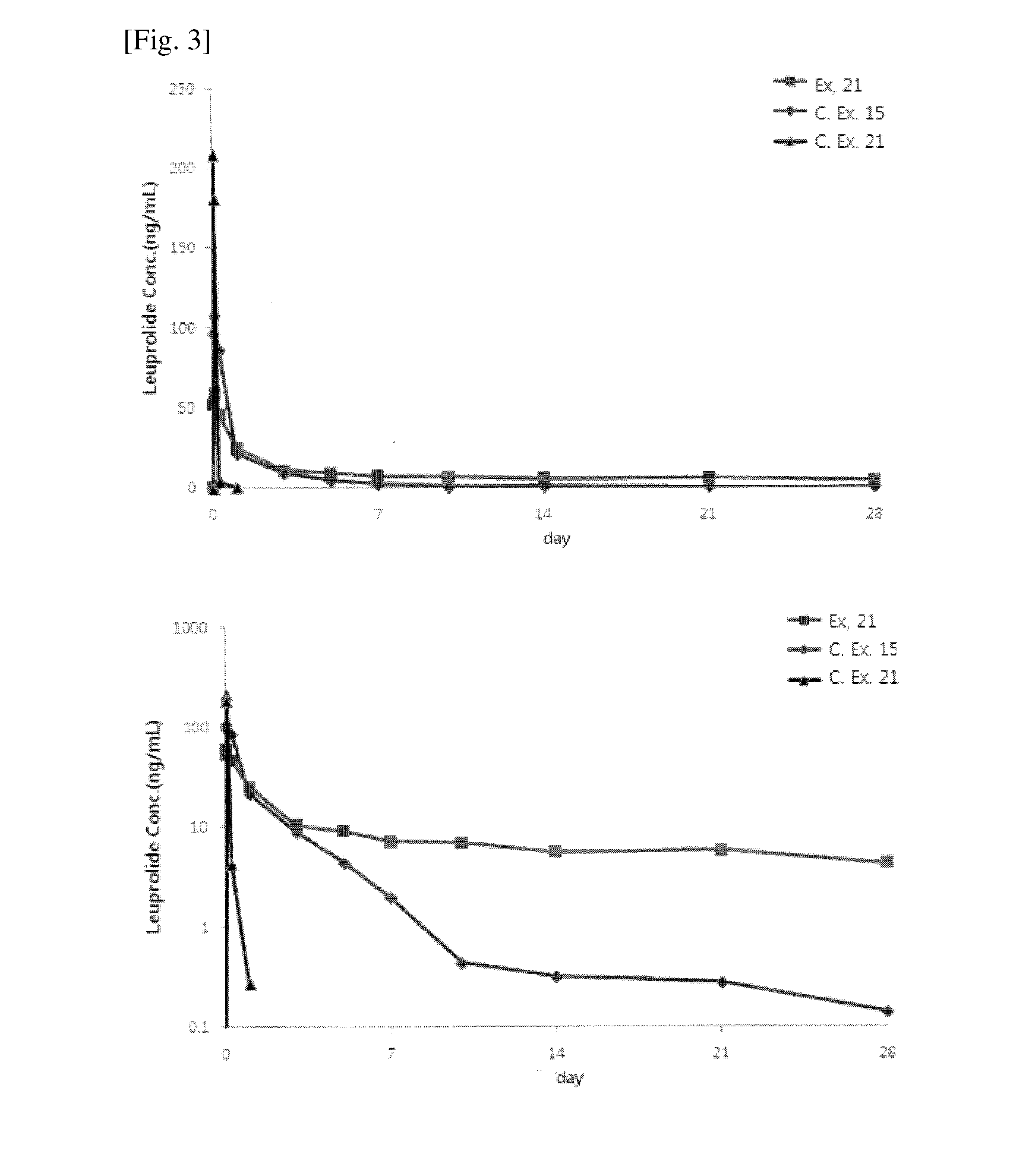Sustained-release lipid pre-concentrate of cationic pharmacologically active substance and pharmaceutical composition comprising the same
- Summary
- Abstract
- Description
- Claims
- Application Information
AI Technical Summary
Benefits of technology
Problems solved by technology
Method used
Image
Examples
examples 1 to 19
Preparation of Lipid Pre-Concentrates
[0070]At the weight ratios given in Table 1, below, liquid crystal formers, neutral phospholipids, liquid crystal hardeners, and anionic anchoring agents were added optionally in a solvent.
[0071]In Examples 1 to 19, the substances were mixed in a water bath maintained at 20-75° C. using a homogenizer (PowerGen model 125, Fisher) for 0.5-3 hrs at 1000-3000 rpm. Then, the resulting lipid solutions were left at room temperature to come to thermal equilibrium at 25° C. before being loaded into 1 cc disposable syringes. The lipid solutions were injected into water (2 g of deionized water) to prepare pre-concentrates of the present invention.
TABLE 1Example(Unit: mg)12345678910111213141516171819Benzoic acid12.517.5Sorbic acid3.521.513.5Stearic acid71Phosphatidic0.10.518.520acidLauryl0.10.91.82.5sulfateDodesyl0.21.65BenzenesulfonateSorbitan43.460.155.040.040.032.860.135.945.1monooleateSorbitan42.450.343.846.445.845.7sesquioleateGlycerol46.251.6monooleate...
examples 20 to 30
Preparation of Pharmaceutical Compositions
[0072]Liquid crystal formers, neutral phospholipids, liquid crystal hardeners, anionic anchoring agents, and cationic pharmacologically active substances were mixed at the weight ratios given in Table 2, below, optionally in solvents.
[0073]In Examples 20 to 30, the substances were homogeneously mixed in a water bath maintained at 20-75° C. using a homogenizer (PowerGen model 125. Fisher) for 0.5-3 hrs at 1000-3000 rpm. The resulting lipid solutions were left at room temperature to come to thermal equilibrium at 25° C., followed by adding each of the pharmacologically active substances leuprolide, entecavir, risperidone, anastrozole, interferon, and exenatide thereto. Then, the substances were homogenized using a homogenizer at 1000-3000 rpm for about 5-30 mins to prepare pharmaceutical compositions in a solution phase.
TABLE 2Example(Unit: mg)2021222324252627282930Leuprolide3.753.753.75Entecavir2.32.3Risperidone1010Anastrozole55Interferon0.04...
experimental example 1
[0080]A cytotoxic test was carried out using an extraction colony assay to examine the anionic anchoring agents of the present invention for in vitro safety.
[0081]In 18 mL of Eagle's Minimal Essential Media (EMEM) supplemented with 10% fetal bovine serum was extracted 2 g of each of the compositions of Examples 2, 7 and 16, and Comparative Examples 5, 7 and 12. L929 cells (mouse fibroblast, American Type Culture Collection) were seeded at a density of 1×102 cells / well into 6-well plates, and stabilized for 24 hrs at 37° C. in a 5% CO2 humidified incubator. The extracts were diluted in EMEM (0, 5, 25, 50%) and then placed in an amount of 2 mL / well in contact with the stabilized L929 cells.
[0082]After incubation for 7 days at 37° C. in a 5% CO2 humidified incubator, the cells were fixed with a 10% formalin solution and stained with a Giemsa solution to count colonies. The results are summarized in Table 5, below.
TABLE 5Extract MediumRelative Colony Formulation...
PUM
| Property | Measurement | Unit |
|---|---|---|
| Composition | aaaaa | aaaaa |
| Polarity | aaaaa | aaaaa |
| Weight ratio | aaaaa | aaaaa |
Abstract
Description
Claims
Application Information
 Login to View More
Login to View More - R&D
- Intellectual Property
- Life Sciences
- Materials
- Tech Scout
- Unparalleled Data Quality
- Higher Quality Content
- 60% Fewer Hallucinations
Browse by: Latest US Patents, China's latest patents, Technical Efficacy Thesaurus, Application Domain, Technology Topic, Popular Technical Reports.
© 2025 PatSnap. All rights reserved.Legal|Privacy policy|Modern Slavery Act Transparency Statement|Sitemap|About US| Contact US: help@patsnap.com



